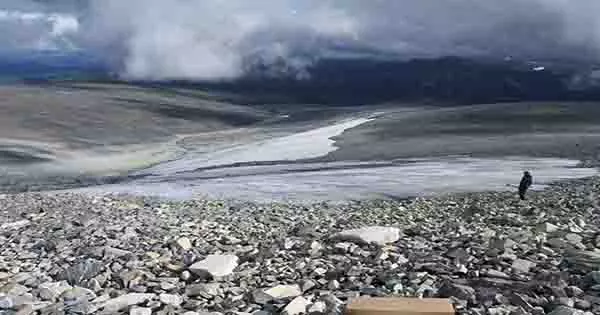Melting ice sheets in Norway have uncovered a cache of ancient arrows that are remarkably well preserved. During a 2019 mission by Secrets of the Ice, a team of glacier archaeologists who explore the receding ice sheets for historical artifacts, the array of arrows was discovered near the ice patches of the Jotunheimen Mountains in southern Norway. One of the most amazing finds is a 1,500-year-old Iron Age arrow that was discovered trapped in the cold ground before being thawed out with mild water. The condition of this arrow was characterized as “excellent,” with its sharp iron arrowhead and, amazingly, a feather fletching.
This wasn’t the only arrow discovered at the location. An arrow from the Viking Age (793–1066 CE) was discovered during a previous excursion to the ice patch in 2013. It was supposed that this was the ice sheet’s lone artifact. However, between 2013 and 2019, the ice patch retreated around 100 meters (238 feet) due to melting caused by climate change-related warmer temperatures. While this is terrible news for the ice sheet’s health, it has aided in the discovery of additional long-lost riches.
During their 2019 search, the team unearthed seven more arrows, one of which was located in a meltwater pond believed to be around 4,000 years old from the Stone Age. They also discovered a unique and “strange” arrowhead from around 600 CE, as well as an arrow with an antler arrowhead from the same period. The findings of their 2019 poll were recently shared on Facebook, and the post soon went viral – and it’s easy to understand why.
“We intend to return to the location with a comprehensive, large-scale survey.” “With only a small inspection, the eight arrows collected from the location indicate that there are certain to be more arrows here waiting to be discovered,” Secrets of the Ice posted on Facebook. “The region where the site is located had relatively little snow this winter, thus circumstances for ice melt and archaeological survey may improve this autumn.” Summer temperatures will decide, as they usually do.”
Last year, the Secrets of the Ice team presented one of their most astonishing discoveries: well-preserved skis with birch bindings and a leather strap that had been untouched for almost 1,300 years. The item is thought to be the best-preserved pair of skis from this period ever unearthed.
















